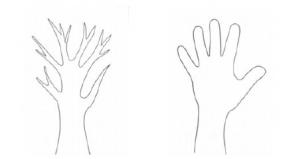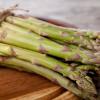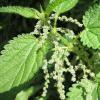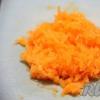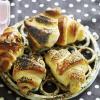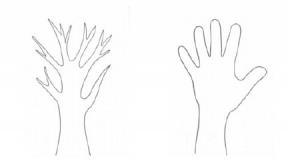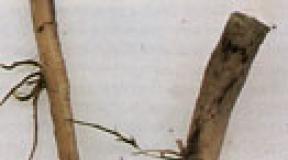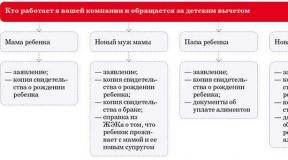Gelatin powder and sheet: differences and methods of use. Gelling agents: gelatin
Proportions of liquid and gelatin
First of all, let's figure out the proportion of gelatin so that in the end we get the desired result. Depending on how soft or dense the mass you ultimately need, I suggest the following ratio per 1 liter of any liquid.
Powdered gelatin:
- for tender (quivering) jelly - 20 grams;
- for stable jelly - 40 grams;
- for jelly that can be cut with a knife - 60 grams.
Leaf gelatin:
- for delicate jelly 1 plate per 125 - 150 grams of liquid;
- for a dense consistency - 1 plate per 100 grams of liquid.
Do not forget to take into account the total amount of liquid and the liquid in which the gelatin swells and dissolves.
How to dilute gelatin? Step by Step Actions
If you are using powdered gelatin:
- Take the required amount of gelatin and add a small part of water. For example, for 1 teaspoon of powder, 60-70 grams of water will be enough.
- Let it swell for 20 0 minutes, you will see how the grains become jelly-like and increase in volume.
- Melt the swollen gelatin in a water bath, stirring constantly. It is necessary to bring it to such a state that the liquid becomes completely homogeneous without grains.
- Then pour it into the prepared liquid, which required gelatin. Stir thoroughly.
- Set aside in a cool place until the dish is completely frozen.
If you have gelatin in plates, you also need to soak it in water, but literally for 5-10 minutes. It swells very quickly. Dissolve in a water bath and use as intended, add to the prepared liquid.
- Gelatin should not be brought to a boil, as it will lose its gelling properties.
- Pay attention to the expiration date, as spoiled gelatin can give off an unpleasant taste and aroma.
- If the jelly is sent to freeze in the freezer, it may crystallize and become covered with an ice crust. And after defrosting, you will have some jelly and liquid. which will no longer harden.
- Do not overdo it with the amount of gelatin, try to always follow the recipe.
I hope my information will be useful to you. And you will always end up with only delicious and beautiful dishes. Let's cook together “I love to cook”, it’s very tasty here! And now, knowing all the secrets of using gelatin, try to prepare the original
I have long wanted to make a material for you on working with gelatin, so as not to describe the same thing in every recipe. Now I will give a link here in recipes, and those who are still new to working with gelatin will get something useful and new.
It is important to remember that all gelling agents differ in texture results, as well as in the technique of use. Therefore, gelatin can never be replaced with agar-agar or pectin, for example. You won't get the same texture, the same mass behavior, or the same result.
Types of gelatin
Gelatin is a protein gelling substance. It is used in many areas. If we talk about cooking, then this is the production of jelly, confit, mousses, souffles, marshmallows, ice cream and so on. Let's start with the simplest thing. Most often gelatin is leafy And powder.
Leaf gelatin.
Working with sheet gelatin is much easier; each sheet has an exact weight (usually 2.5 or 5 grams). Therefore, you can easily dispense with scales and use scissors to cut (visually) the desired mass of gelatin. The second plus is that leaf gelatin can be soaked in any amount of water, and it will take as much as it needs, again we do without scales and unnecessary manipulations. It is usually ready to use faster than powdered gelatin.
The disadvantages of sheet gelatin are that it is most often more expensive than its powder counterpart; it is made from pork or beef.
Powdered gelatin.
It is cheaper, and also comes with fish (halal), this expands the audience of consumers of products made from such gelatin. Powdered gelatin must be soaked in water in a ratio of 1:6 (sometimes a 1:5 formula is used). This means that if a recipe calls for 10 grams of gelatin, you will soak it in 60 grams of water.
In all other senses, powder and sheet gelatins are absolutely identical if they have the same gelling strength.
The power of gelatin
Several classifications of gelatin have been accepted in the world. In general, the strength of gelatin is measured in blooms (bloom, in honor of the creator Oscar Bloom). The most common gelatin is with a strength of 125-265 bloom. The greater the strength of gelatin, the greater the amount of mass it can stabilize.
The second classification is silver, gold, bronze and platinum (America, Australia and other countries use this system). Moreover, in these countries, gelatin sheets weigh differently, so that each sheet stabilizes the same amount of liquid. For example, a Bronze strength sheet weighs 3.3 grams, while a Platinum strength sheet weighs only 1.7 grams. In this case, both stabilize the same mass. This simplifies the work with recipes; they indicate the number of sheets, and the consumer decides what strength to use independently.
Bronze
125-135
Silver
160-170
Gold
190-220
Platinum
235-265
Every time you read a recipe, your task is to find out what strength of gelatin the author used. After all, it is obvious that if your gelatin is weaker or stronger, you will not get the intended texture of the dessert, and you may even lose the product altogether if the fillings (components) float.
At the same time, remember that sheet and powder gelatins of the same strength are completely identical in terms of the final result. You can safely replace one type of gelatin with another if it is more convenient for you to work with them.
On the other hand, there are no rules that dictate how dense the resulting mass should be - a barely stable gel or a hard jelly, similar to marmalade. You decide all this yourself, keeping in mind the use of the product, its shape and type (you can make the filling softer in tarts, and denser in a mousse cake).
Preparing gelatin
Gelatin must first be soaked in cold water. Moreover, the colder it is, the less likely it is that the destruction of the protein in gelatin will begin, and you will lose some of its strength. It is safest to use ice water or water with ice cubes.
Leaf gelatin can be soaked in any amount of water. He will take the required amount himself. A tall glass or flat wide container is suitable for this. I recommend soaking leaf gelatin in whole sheets; if you cut the sheet into pieces, some of them may be lost (you simply will not see that the pieces remain at the bottom of the glass).


Leaf gelatin will be ready and soft very quickly. It can be used.

Powdered gelatin should take up all the water (swell). At the same time, you will see that a loose mass remains in the cup without visible signs of free water. This is the pulp you add to the mass.

If it turns out that the gelatin is already ready to use, but you are not yet, put it in the refrigerator. Thus, we will stop the heating of the water and the gelatin will not lose its strength.
Launch of gelatin
In order to start gelatin, it must be introduced into the mass at a temperature of 50-60 degrees. At this temperature it will begin to combine with moisture in the mass. This is called dissolving gelatin. Masses into which gelatin is introduced cannot be boiled; this will destroy the stabilizing properties of gelatin (with the exception of heat-stable gelatin).
To be sure to do everything correctly, bring the mixture to the first signs of boiling (small bubbles, foam). Remove the saucepan from the stove. Squeeze out the leaf gelatin (or collect the swollen powder) and add to the mass. The temperature of such a mass will already drop to 70-75. This is safe for the gelatin and will help it disperse well. Stir the mixture with a spatula. If you are working with more than 500 grams of mass, you can use a blender to be sure.

Remember that gelatin begins to stabilize when the temperature drops to 15 degrees. And it takes from 6 to 24 hours for the mass to completely stabilize. That is why products with gelatin are recommended to be prepared in advance.
Gelatin is reversible, which means that if the thickened mass is heated to 50 degrees, it will become liquid again.
Friends and enemies of gelatin
Some ingredients can help or hinder gelatin in stabilizing masses. This means that you need to work with these ingredients more carefully or take into account their ability to help/interfere with gelatin.
Friends of gelatin
Sugar, alcohol (up to 40%), milk
Enemies of gelatin
Tropical acids (kiwi, pineapple, papaya - their enzymes destroy gelatin), strong acids (Ph above 4, for example, wine), salt
Gelatin mass
Many modern confectionery shops use another type of gelatin - gelatin mass.

Gelatin mass is pre-stabilized gelatin with water. The idea is that you soak the gelatin powder in ice water (1:6). And we wait for the mass to swell. Then heat the mass in the microwave. In small pulses for 10-15 seconds, until the mass becomes uniformly liquid. We put the preparation in the refrigerator for a day. The next day we get a gelatinous mass - elastic and transparent.

Next, you simply cut off the required amount of gelatin mass and dissolve it in a hot mass (or heat it again in the microwave until liquid and add it to a cold mass, for example, whipped cream).

The advantage of the gelatin mass is that we get the finished stabilizer faster - there is no need to soak the gelatin and wait for it to swell. The only subtlety is recalculating the masses according to the recipe. For example, if a recipe calls for 10 grams of gelatin, you would use 70 grams of gelatin mass (10 g gelatin + 6 parts water). The gelatin mass can be stored in the refrigerator for up to a week.
P.S.
Good news. My store is open again. Now this is a separate site to make it more convenient for you to use it - dvemorkovki.ru. I plan that it will become the most convenient store for those who love to cook. Up-to-date showcase, many delivery (worldwide) and payment methods, products that I select myself and ingredients that I use myself. Come in!
Leaf gelatin May 16th, 2017

Gelatin used in preparation: Aspics, jellies, cakes, sweets, yoghurts.
Leaf gelatin easy to use.
The time required for cooking is 3-5 seconds.
Gelatin is made from a mixture of animal proteins.
This product contains many microelements,
from which phosphorus, sulfur, and calcium are released.
This is an extremely useful product for connective tissues in the human body.
The constant benefit of gelatin lies in the presence of the amino acid glycine in its composition, which effectively supplies the body with the necessary energy,
which is required for full human life.
(From the article Health Benefits of Gelatin)
I use German gelatin Ewald Gelatine Gmbh. The weight of a sheet of this gelatin is about 4g
GELATIN CONSUMPTION
for a denser structure -1 plate per 100 g of gelled mass;
for a soft, delicate structure, 1 plate per 120-140 g of gelled mass. As an example, a recipe for low-calorie CREATED BANANA DESSERT (100 g contains 94 kcal)
INGREDIENTS:
150 g low-fat cottage cheese
150 g banana
100 ml yogurt
3 slabs of gelatin
Water or juice 4 tbsp. spoons

Mash banana, cottage cheese and yogurt in a blender. Add melted and cooled gelatin. Beat with a blender or whisk. When whipped with a whisk, a more delicate mass is obtained.
Transfer to a bowl and refrigerate for a couple of hours. Dessert is ready.

I D E I
You can add cocoa to cottage cheese.
The result is a delicious dessert similar to tiramisu.
You can also make desserts:
Yogurt + berries + gelatin.
Hibiscus tea + gelatin, etc.
RECIPE:
28.02.2018
The fact that there is also sheet gelatin may cause confusion, especially for novice confectioners. The following questions arise: what is the difference between sheet gelatin and regular gelatin, how to use it and whether they can replace each other.
What is gelatin that we are used to?
The regular type can be easily found in any, even small grocery store. It is used to prepare a wide variety of dishes, from jellied meats to ice cream. This confectionery ingredient can bring dishes both to a stable jelly consistency and to a slight thickening, as, for example, in yoghurts, sauces, and mousses.
Its quality is especially important when preparing sweet dishes. A low-quality product can introduce an additional smell and taste of glue, which is definitely not very pleasant, lead to too much or insufficient thickening, as well as a lack of thickening as such. Therefore, confectioners should be careful when choosing this additive.
Give preference to proven gelatin: based on your own experience, based on reviews from others, or simply from well-established manufacturers. This will have the best effect on the quality of the dishes. Pay attention to these signs, because they are characteristic of good gelatin.
- It is odorless and tasteless.
- Its color can vary from light yellow to more saturated, even brownish.
- Powder or granules measuring no more than half a centimeter.
- It swells easily in cold water in less than half an hour.
- After heating, it hardens in a cool place in one and a half to two hours.
- The finished jelly retains its shape well and has a uniform texture.
It is called ordinary, bulk, powder. After analyzing its properties, it’s time to get down to the difference between sheet gelatin and bulk gelatin, what is the difference between them?

What is the difference between powdered and sheet gelatin?
The biggest difference between these two species is mainly external. The sheets are thin plates that usually weigh 2-2.5 g. Thanks to this, it is convenient to determine the required amount by eye. Experienced cooks usually use the type of gelatin that is more convenient for them, or regularly replace them with each other.
Some sources have information that the gelling properties of sheet gelatin are slightly higher, therefore, it needs to be used a little less. But in other sources you can find information that their properties are identical. To avoid mistakes, it is better to carefully read the instructions on the package and try how each specific gelatin behaves.
In order to accurately prepare a dish with gelatin according to a recipe, you should, if possible, pay attention to its strength. This value is measured in blooms and shows how effective this component will be in creating jelly. Sheet and regular gelatin, the difference between which is generally limited by appearance, can be of the following strength (it is indicated in ascending order):
- bronze: from 125 to 135 units;
- silver: from 160 to 170 units;
- gold: from 190 to 220 units;
- platinum: from 235 to 265 units.
Differences also occur during the preparation phase when water is added. For both types, it should be cold, but when working with sheet gelatin, you should not think about the required amount of water: the plates will absorb as much as needed. For bulk, it is important to maintain a proportion of 1:6, that is, add 6 times more water than gelatin. The difference between sheet gelatin and regular gelatin is that it swells faster.

What to consider when making jelly
There are some subtleties that can hinder or, conversely, facilitate the disclosure of the properties of the jelly. Here are just a few nuances that are important to know about.
- To prevent regular gelatin from sticking into lumps when swelling, it is important to fill it with water, and not pour it into it.
- If you pour cold water over the container in which the gelatin will swell, it will not stick to its walls.
- Due to the thinness and transparency of the gelatin sheets, it is better to soak them whole without first separating them into smaller pieces.
- It is more correct to introduce gelatin into an already warm mass, which will subsequently heat up. This way it will dissolve faster and easier.
- Do not bring the mixture with gelatin to a boil: this can neutralize the gelling properties. Sure signs to remove from heat will be the appearance of foam and the very beginning of bubbling.
- Acidic fruits such as kiwi, pineapple, grapefruit, and wine can prevent the jelly from thickening, so you should not use them.
As you can see, there is no particular difference between sheet and regular gelatin; they easily replace each other. The first type is less common and costs more, but the advantages include more convenient dosing, faster swelling and taking the amount of water that is needed. Choose the type that is most convenient for you!
Those who like to spend their free time preparing various dishes, of course, know what leaf gelatin is. This product is quite often used in cooking.
Detailed description
When used in Latin, the word “gelatin” sounds like “hardened.” This definition expresses the essence of the product itself. Connecting with any liquid medium, it gradually changes its state of aggregation. After some time, the mixture becomes hard, while remaining quite plastic. This substance is sold on the market in the form of small granules, but sheet gelatin is also available.
On store shelves it can be found in the form of a set of records, each of which is packaged in a separate film. Few people know that leaf gelatin has a rather complex chemical composition. In addition to beneficial minerals (calcium, zinc, magnesium, sodium, potassium, iron, copper, phosphorus and manganese), it contains many different vitamins (PP, C, B1, B2, B5, B6, B9 and E). In addition, gelatin is rich in collagen, which is so necessary for humans to strengthen bone tissue and joints. It is important to eat it not only for small children during the formation of the body, but also for adults as a guarantor of strength. Leaf gelatin is also rich in amino acids. The main one is glycine. This substance is a kind of source of energy and encourages an active life. And proline and hydroxyproline help cope with salt deposits and restore bones after fractures.
Application area
Having understood the composition, you need to understand where leaf gelatin is used. How to use this substance for cooking?

Basically, it is an obligatory component in the recipes of various desserts (jelly, puddings), as well as cold meat and vegetable snacks. When you mention this product, your memory immediately brings to mind jelly, familiar to everyone from childhood, or, as it is also called, jellied meat. By the way, few people know that this dish is considered healthy due to gelatin. After all, meat is a pantry of protein, and it contains very few useful amino acids. With the help of this gelatinous supplement it is possible to replenish the missing amount. The dish immediately becomes a real accumulator of vital energy. Sometimes boiled meat or fish is simply covered with a layer of gelatin. It looks very impressive and in addition it turns out quite tasty. In the confectionery industry, the gelling component is used to prepare various creams, yoghurts, mousses and candied fruits. The useful ingredient not only changes their consistency, but is also a good dietary supplement.
Finished product
Experienced cooks and housewives are familiar with Ewald leaf gelatin. It can often be found in stores in packages of various weights.

The product is produced by the well-known company Ewald-Gelatine GMBH from Germany. It looks like thin wafer sheets, of which there can be from 10 to 200 pieces in a box. A distinctive feature is that it has virtually no taste or smell. This is very convenient and does not limit its scope. The technological process for producing sheet products is not particularly complicated. The liquid mass prepared in advance is formed into thin plates, and then dried in such a way that the mass of one product becomes equal to about 5 grams. Each unit is wrapped in cling film and placed in a cardboard box. After this, it can be safely stored in a dry place for up to three years. This gelatin is very convenient to use, which determines its consumer demand.
Preliminary preparation
To begin the process of working on any dish, the product must first be prepared. To do this, you need to know how to dilute leaf gelatin. It's not at all difficult to do this.

The procedure is quite simple and takes very little time:
- The plate must be removed from the packaging, separated from the film, and then placed on the bottom of a clean dish and filled with cold water. After 5 minutes the sheet will become more transparent and elastic.
- After this, the product must be squeezed out, removing excess moisture, and then transferred to a pan with boiling water. The container should be placed on low heat. There, with constant stirring, the substance should dissolve, changing
- Now the finished composition must first be cooled a little, bringing the temperature to 45 degrees. After this, it can be mixed with the main product. After spending some time in the refrigerator, the dish will become jelly-like.
Sometimes a different preparation option is used. With it, dissolved hot gelatin is poured separately into the mold. Then, after waiting for it to completely harden, carefully use a knife to separate it from the dishes and lay it out on the surface of the finished dish. This option is most often used in the confectionery industry.
Cooking method
To have a complete understanding of the product, you need to know how leaf gelatin is made. The photo gives only a general picture of the finished product. The raw materials for its production are tendons and cartilage left after cutting up cattle carcasses. First, they are washed well and then subjected to long-term heat treatment. The fibers are boiled in large quantities of water for several hours. The result is a clear and slightly viscous liquid. After this, it is given a certain shape in the form of plates, and then dried to a relative humidity of less than 15 percent. Such sheets can be used both as an ingredient for the main mixture and as a semi-finished product. For example, a cake or other dessert needs to be decorated with green leaves or made. They are easy to make from gelatin. To do this you need:
- First, keep the plate in cold water.
- Then, when it swells, use a special form to print a design on the surface.
- After this, apply food coloring with a brush.
- Cut the products with regular scissors.
A dessert decorated with such details will look very beautiful, appetizing and natural.
